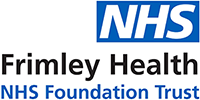Reflective practice (*UNDER CONSTRUCTION*)
Reflective practice has a wide and reaching platform for students across all disciplines. What does Reflective practice look like? The following links explore various approaches:
- HCPC guidance on reflective practice
- RCN guide to reflection
- Videos exploring reflective practice:
- Video exploring reflection in nursing
- Open University guide to models of reflection
Models of reflection
There are various styles of reflection by many authors. No one is right; it’s what is best for the student and the situation being explored. Below are some examples of the more common approaches:
Kolb
Kolb's (1984) cycle of reflective practice is a model designed to help people learn from their experiences. It can be used as a basis for the structure of a reflective essay, or as a way to structure your thinking. Kolb's model is based on four stages, requiring you to work through each one before the cycle leads to new experiences and loops back around
Gibbs
- Videos exploring Gibbs' reflective cycle:
Johns
- Johns model of reflection
- Johns model of reflection (MSR)
- Video exploring Johns model of reflection:
Rolfe
Rolfe et al's (2001) framework focuses on three questions:
- What?
- So what?
- Now what?
By responding to each of these questions you are able to outline an experience, relate the experience to wider knowledge and identify implications for your practice. This is a popular framework for nurses
Schön
Schön’s (1991) Reflection in action/Reflection on action provides an additional element by making a distinction between reflection during the event and reflection after the event. It may be helpful to take account of this distinction during your own reflective practice. This is particularly useful in practical situations, such as when teaching or nursing, where you may need to think on your feet and try new things when something is not going as you would expect. Using Schön’s framework allows you to capture that aspect of reflective practice.
Driscoll
The Driscoll model of reflection is one of the simplest models you will come across.
CRASHED
The “CRASHED” model is a purpose designed pre-hospital reflective care model acronym which stands for Communications, Response, Actions, Subsequent Actions, Hospital, Evaluation and Ethics and Discussion. It was created by a group of pre-hospital care students and influenced by the works of nursing theorist Patricia Benner and medical author Christopher Johns.

